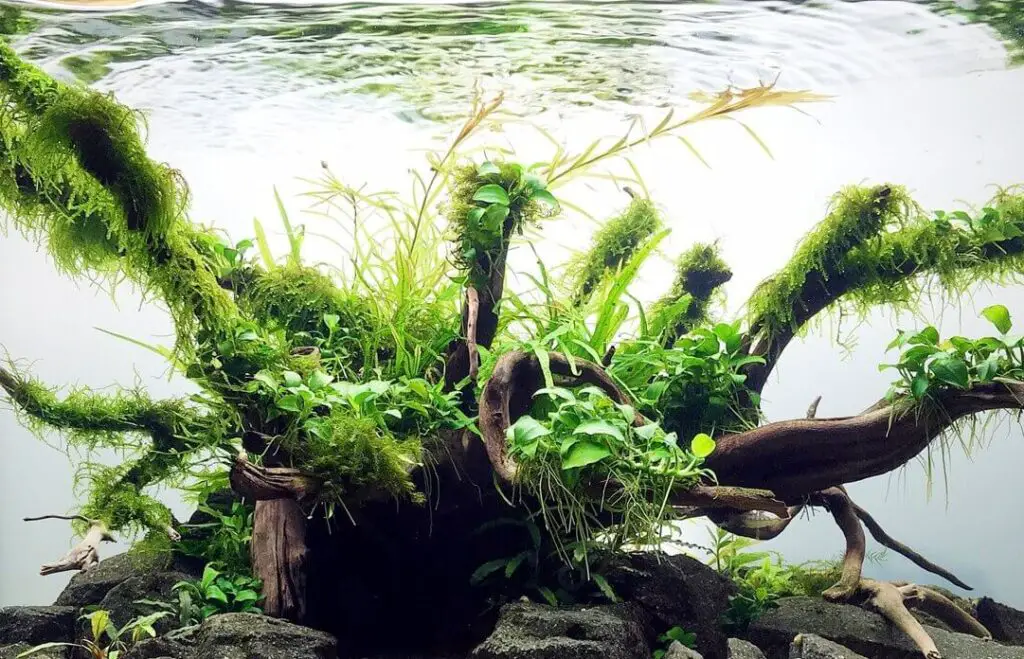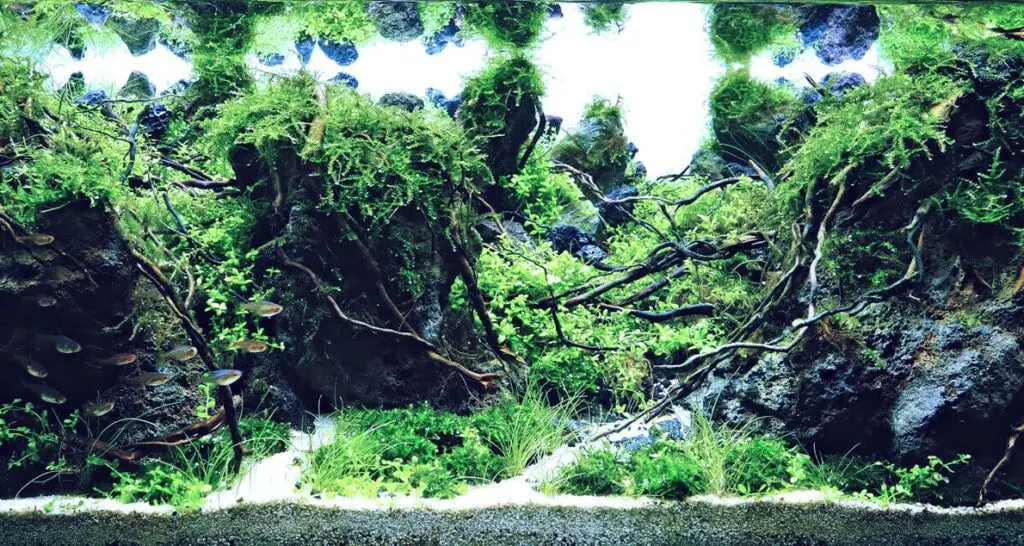The Redmoor Root Driftwood: Benefits Beyond the Beautiful Visual
Chinese Azalea root is also known as Redmoor root driftwood in the aquascaping world.
People choose this wood for its stunning visual.
But it turns out that the driftwood does not only contribute to the aquarium’s aesthetics.
There are other pros of utilizing it as an aquascaping component.
The Aesthetic Features of Redmoor Wood
This driftwood has a very distinguished look, especially if compared to other driftwood pieces.
Redmoor wood is also known as spider wood, and basically, almost root driftwood will categorize as spider wood, more accessible to say than telling the wood of origin.
Redmoor shaped like a root. However, the root tendrils are firm and not wispy.
It may have red, tan, or soft brown color that will appear stark against the dark gravel floor in the aquarium.
Redmoor Driftwood has a natural light coloring and features more intricate branches that give a unique look.
Beneficial Features of the Redmoor Driftwood
As stated, the benefits of Redmoor root driftwood go beyond its aesthetic looks. Here are some beneficial features of this type of driftwood:
It Lowers the Water’s Hardness Level
Although the level of tannin it produces is moderate, it will eventually lower the pH level of the water it inhabits.
This is beneficial for underwater animals that live in slightly acidic water, such as freshwater fish.
This change also happens slowly so that the fish can adjust.
The moderate amount of tannin production also implies that the water will likely not turn brown in the future.
Some aquascaping artists prefer their water to remain clear.
The slight yellow tint to the water can be solved by water rotation.
Provides Food for Small Water Creatures
The Redmoor structure will break down into small pieces.
This process happens for a very long time and is a natural occurrence.
It is beneficial because invertebrates will eat the small broken down parts of the tree.
The invertebrates are a source of food for the bigger fish.
A Great Growing Place for Plants
Due to its structure, underwater plants will thrive when attached to the driftwood.
Its broken down parts can provide nutrients to these plants.
That way, the biodiversity in the aquarium will be more extensive.
The process of attaching the plants to the root should be done at the beginning.
Low Toxin Rate
Many driftwoods pose a risk to the aquarium ecosystem if it does not receive the proper treatment.
It might be due to the toxic components in its structure. Redmoor root driftwood, luckily, does not contain inherent toxins.
What Redmoor wood root looks like?
Redmoor root wood looks like a small tree stump along with the roots.
The tangle of delicate roots looks just like tree roots coming from a riverbank.
Redmoor root instantly creates a dense web of miniature sources that fish love to explore.
It will give you some 3D focus points and is perfect for aquarium design without a background.
A reddish tint color that gives a subtle vibrance to the aquascape design, this wood is not center-focused but can provide exceptional attention when you use it in your aquarium.
Redmoor Driftwood is another fantastic natural product that does helps to create your perfect natural aquarium setting.
Preparing Redmoor driftwood
Some preparation for Redmoor roots is crucial, and it’s almost the same when you properly clean all types of driftwood before you put it into the aquarium.
- Soak Redmoor root in will make it waterlogged and make the wood naturally weigh.
- Releasing tanning from your driftwood and you suppose to change the water in your bucket regularly.
- Be patient because it takes around two weeks to correctly worked.
- If you want the fastest ways, you can boil it for 30 minutes
- Soaking and boiling not going to stop Redmoor wood released tannin, but it will decrease significantly
- When you put this wood in your aquarium, it might be still releasing tannin or make the water slightly brown
- Don’t worry; tannin is not harmful to your fish, but most people don’t like the brown color in their aquarium because it looks dirty
- no need for chemical cleaning or uses abrasive sponges to clean.
- The aquarium environment should permanently stabilize before introducing fish.
Is it recommended to use Redmoor driftwood?
Red Moore Root is recommended to all fish keepers as it has many benefits if added to a tropical aquascaping setup.
Red Moore lasts long and makes an ideal shelter for many aquatic creatures.
It’s a branchy tangled wood perfect for use in the Nature Aquarium.
It has a light brown color, and it’s smooth on touching and somewhat on a soft side when it comes to its weight.
A thick tangle of smaller than usual roots in Redmoor root wood makes fish love to explore.
The tangle of sensitive roots looks simply like tree roots originating from a riverbank.
- Perfect for creating a natural, unique aquascape
- Perfect for any size of fish tank
- Adds a subtle vibrancy to the aquascape
- Create an artistic look
In Summary
What can we conclude about the Redmoor wood? Here are some essential points:
- It has a unique shrub look that is sturdy and not wispy.
- It can lower the hardness level of the water body.
- The broken-down parts can provide food to invertebrates.
- It is a great growing spot for water plants.
- It does not contain a high toxin rate.
Aquascape design for your inspiration

Aquarium Dimensions: 60 × 30 × 30 cm
Aquascaping Title: Japanese monster
Water Volume: 54L
Background: Opal film
Aquarium Lighting: 2x24W T5 6500K lighting
Water Filtration: Canister filter 600 L/h

Plants in Aquarium: Anubias nana petite, Microsorum trident, Microsorum needle leaf, Bucephalandra Velvet Leaf, Weeping moss, Fissidens Fontanus, Christmas moss, Potamogeton Gayi, Vallisneria Natans, Staurogyne Repens.
Animals: Paracheirodon Simulans, Caridina Multidentata, Ancistrus sp. Gold, Red cherry shrimp, Haitia Acuta.
Materials: Basalt rocks, red moor wood, cosmetic sand, Ista shrimp soil.
Source: https://aquatic-gardeners.org
